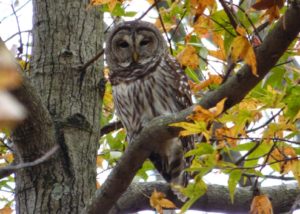Magna Anno, a Big Year by any other name, or hunting without a gun

Step one, watch The Big Year movie with Steve Martin, Owen Wilson, and Jack Black.
Step two, get a couple of your friends together to hold your own (very little) Big Year birding competition.
Step three, have at it for bragging rights…and it is a pretty healthy diversion.
First, we should define a Big Year. A Big Year, according to Wikipedia (which contains the sum total of all human knowledge), “is an informal competition among birders to see who can see or hear the largest number of species of birds within a single calendar year and within a specific geographical area. A big year may be done within a single US state, a Canadian province, within the lower 48 continental U.S. states, or within the official American Birding Association Area (defined as the 49 continental U.S. states, Canada, and the French islands of St. Pierre and Miquelon, plus adjacent waters to a distance of 200 miles from land or half the distance to a neighboring country, whichever distance is less. Excluded by these boundaries are Bermuda, The Bahamas, Hawaii, and Greenland).”

Now, granted that Canada isn’t too far from Vermont, but do we want to have to contest with an overly competitive birder jetting off to Alaska to add some unique bird species? Hint – no we do not. The same goes for the “French islands.” Another issue with the original rules – to “see or hear the largest number of species of birds….” Most of my guy friends can’t hear his own wife in the next room. I’m supposed to let him vouch for the fact he heard a Gray Catbird and not a Northern Mockingbird? I don’t think so.

Our rules are that you must see and identify the bird in the lower 48 states and surrounding waters. Zoos and pet birds don’t count. All bird sightings to be counted need to be entered on Cornell University’s eBird site. (Registration is free and the information is used by scientists in tracking bird species distributions and migration information.)
The eBird site has an unbelievable amount of information. For example, I’m interested in seeing a Snowy Owl, a bird I have never seen. I can go to eBird, look under explore data tab, then species maps. I enter the species I’m interested in and the location (in this case a ZIP code). The result is a map with sighting locations identified. Note that on this map (below) there was a sighting near Lang Farm in Essex, Vermont on December 16th, yesterday. Just imagine if they had the eBird equivalent for 8-point bucks?! Right, there’d be no 8-point bucks left.
On the off chance you spot some interesting bird, you can add it to the eBird sightings (after setting up a free account). Then when someone hovers the cursor over your map pin they will see your name and sighting.

eBird is a great aid to help locate birds. However, it is no guarantee that the bird will be there when you arrive. That is where the hunting comes in to play. You will usually need to spend some time in the field or woods to spot the particular bird you are stalking. It is a great excuse to get outside and observe. You may even find that 8-point buck, just don’t mark it on eBird.
Interested in joining our little big year? Just send me a response to this post and I will add you to the currently very short list. You can follow our progress on Twitter at @sportingafield. I will post progress a couple times a month, along with links to any interesting pictures we take.